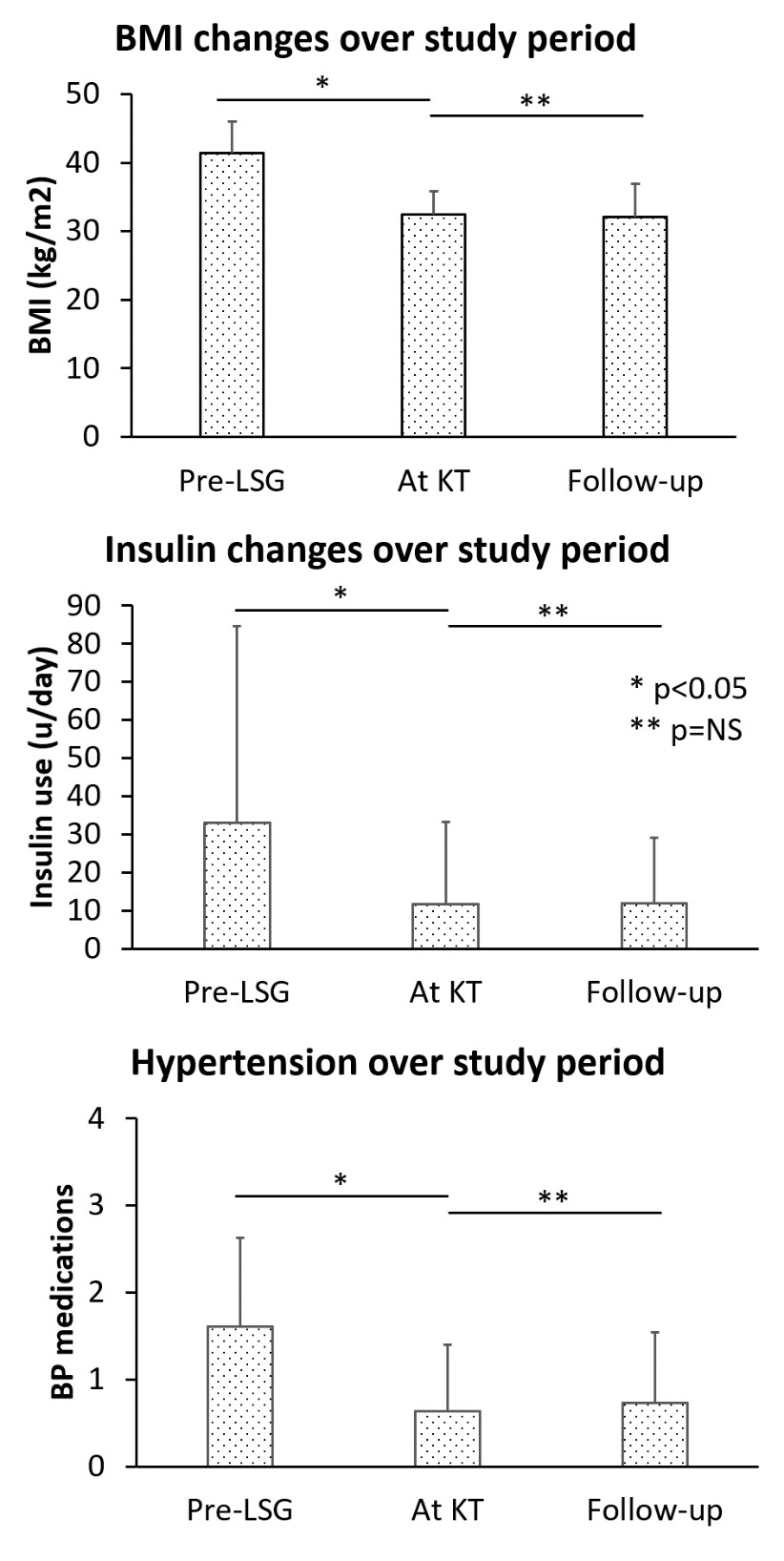Kidney Transplantation after Sleeve Gastrectomy in the Morbidly Obese Candidate: Results of a Five-Year Experience
Department of Surgery, University of Cincinnati, Cincinnati, OH
Meeting: 2019 American Transplant Congress
Abstract number: D189
Keywords: Insulin, Kidney transplantation, Obesity, Outcome
Session Information
Session Name: Poster Session D: Non-Organ Specific: Disparities to Outcome and Access to Healthcare
Session Type: Poster Session
Date: Tuesday, June 4, 2019
Session Time: 6:00pm-7:00pm
 Presentation Time: 6:00pm-7:00pm
Presentation Time: 6:00pm-7:00pm
Location: Hall C & D
*Purpose: Morbid obesity serves as a barrier to kidney transplantation (KT) due to potential suboptimal post-transplant outcomes. Laparoscopic sleeve gastrectomy (LSG) has previously been shown to improve transplant eligibility through weight loss. We aimed to examine the role LSG plays in improving patients outcomes post renal transplantation, including its possible effects on new onset diabetes after transplant (NODAT).
*Methods: A single-center analysis was performed identifying all patients who underwent KT after LSG from 2011-2017 (n=41). Exclusion criteria included type I DM and previous pancreas transplantation. NODAT was defined as a new insulin requirement after KT. Delayed graft function (DGF) was defined as need for dialysis within the first week after KT. Mean post-transplant follow-up period was 22 months.
*Results: 41 patients underwent KT after LSG after median time of 16 months. Median age of post-LSG patients undergoing KT was 56.0 years at time of KT. The majority of the patients were Caucasian and male. Average BMI decreased by nine from the time of LSG to KT, and no patients regained weight at one-year follow-up. After LSG, the number of patients with HTN (85.4% vs 48.5%) and the number of antihypertensive medications used decreased significantly (1.6 vs 0.6) at time of KT (p<0.001 each). At one-year follow-up, the improvement in HTN persisted (51.2% vs 48.5%, p=NS). The average insulin regimen also decreased from 33.0±51.6 to 11.7±21.5 daily units at time of KT (p<0.001). This improvement also persisted at one-year follow-up (11.9 vs 11.7 units, p=NS). Zero patients suffered NODAT over the follow-up period, in comparison to our institutional rate of NODAT at 15.8%. One patient developed DGF (2.4%) after KT, compared to our institutional rate of 13.3%. After one-year post-KT period, there was one graft loss (2.4%) and no patient mortality.
*Conclusions: This is the largest reported series of kidney transplant after planned LSG in morbidly obese patients. Our results confirm excellent post-transplant outcomes among patients who otherwise would have been denied KT eligibility.
To cite this abstract in AMA style:
Kim Y, Bailey AJ, Morris MC, Hlavaty J, Cuffy MC, Woodle ES, Shah SA, Diwan TS. Kidney Transplantation after Sleeve Gastrectomy in the Morbidly Obese Candidate: Results of a Five-Year Experience [abstract]. Am J Transplant. 2019; 19 (suppl 3). https://atcmeetingabstracts.com/abstract/kidney-transplantation-after-sleeve-gastrectomy-in-the-morbidly-obese-candidate-results-of-a-five-year-experience/. Accessed November 15, 2025.« Back to 2019 American Transplant Congress

